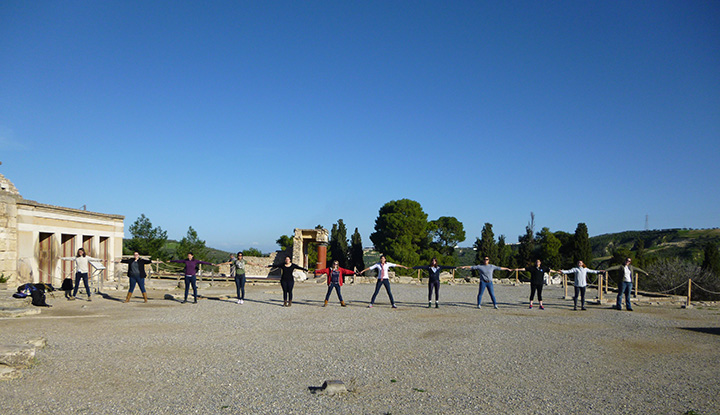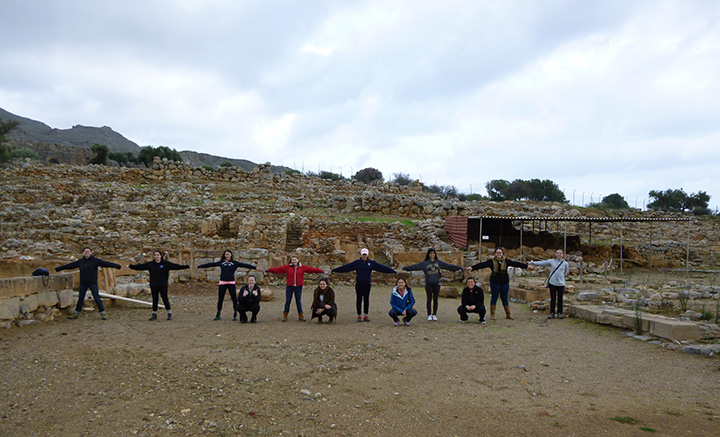Today, one of the main sites we visited was Kato Zakros – the smallest of the four Minoan palaces, where the center court is 12 meters across opposed to the typical 22 to 28 meters. By our technique of measurement with our wingspans is about 4 people short: as you can see below the Knossos central court takes all 12 of us to span, but Kato Zakros barely holds 8 of us!
The remains of the town at Kato Zakro extend right up to the northern edge of the palace, suggesting the town existed first. Since the site was never robbed, when it was found, there was a great wealth of Linear A tablets, bronze swords and tools, and over 10,000 pots from which many conclusions have been drawn.
From our past palatial observations, we had assumed that within the town walls, each community held the supplies to be self sufficient; however, Kato Zakros was different in this regard. While the architecture revealed 4 distinct well or fountain structures (cisterns meant to hold water,) a sign of advanced plumbing, they also discovered storage intended not for grains, but for imports. The fact that they didn’t have much land and space in general to produce all they needed, the increased trade with the Middle East was undeniable. (The assumption furthered by other findings as well, in particular, an elephant tusk and copper ingots.)
A unique characteristic to this palace that we haven’t seen anywhere else is what seems to be a kiln as Vasilli, our pottery instructor described. The long parallel compartments through which the heat would reach the pottery placed above. This palace was unique for its direct combination of spaces for religion, commodity storagep, and archives all very closely in the same space; which probably reared a stronger community than the other palaces.
Later that day, we hiked Petsofas, the sanctuary site above Palaikastro. The hike was steep, yet rewarding (and incredibly windy!) when we reached the top. We put our archaeological caps on and searched for anthropomorphic figurines. Most of what we found were cup fragments and handles – all in all, deeming this yet another successful day!


